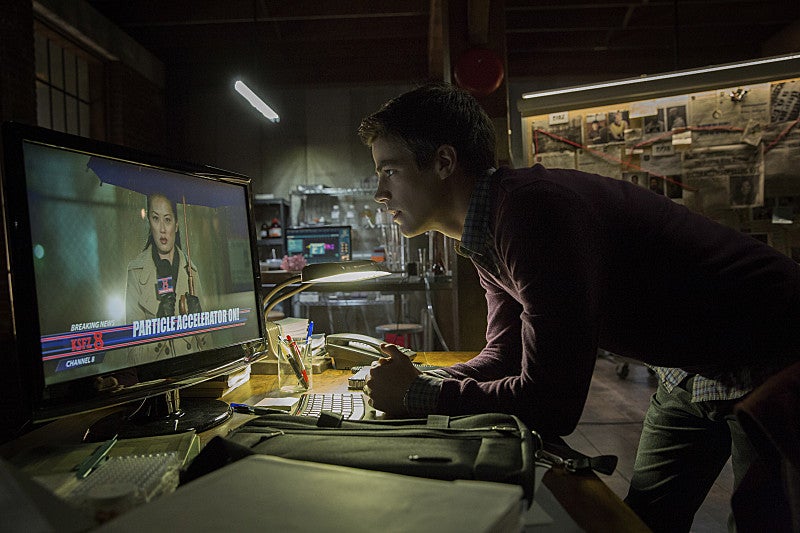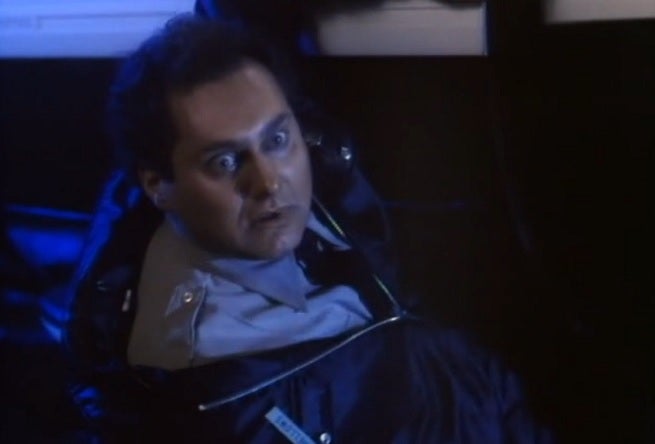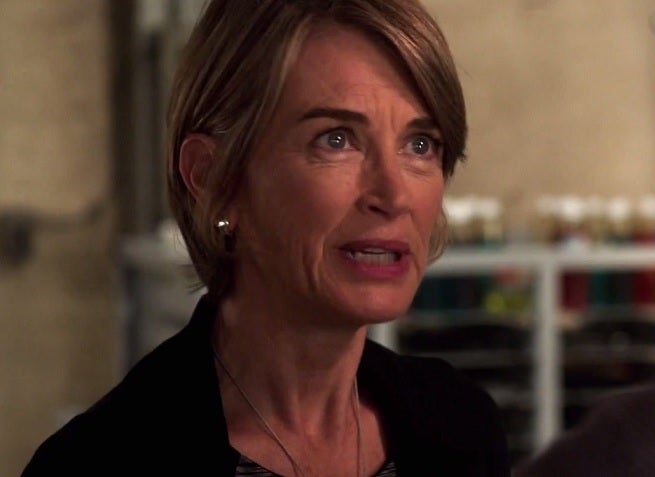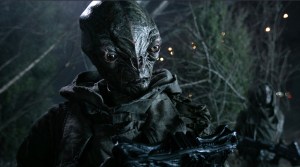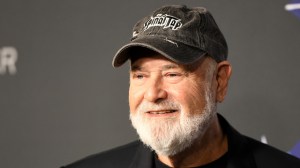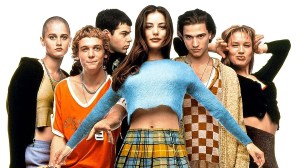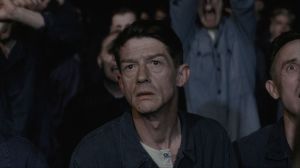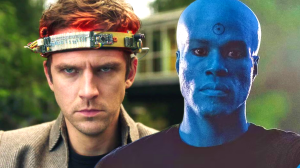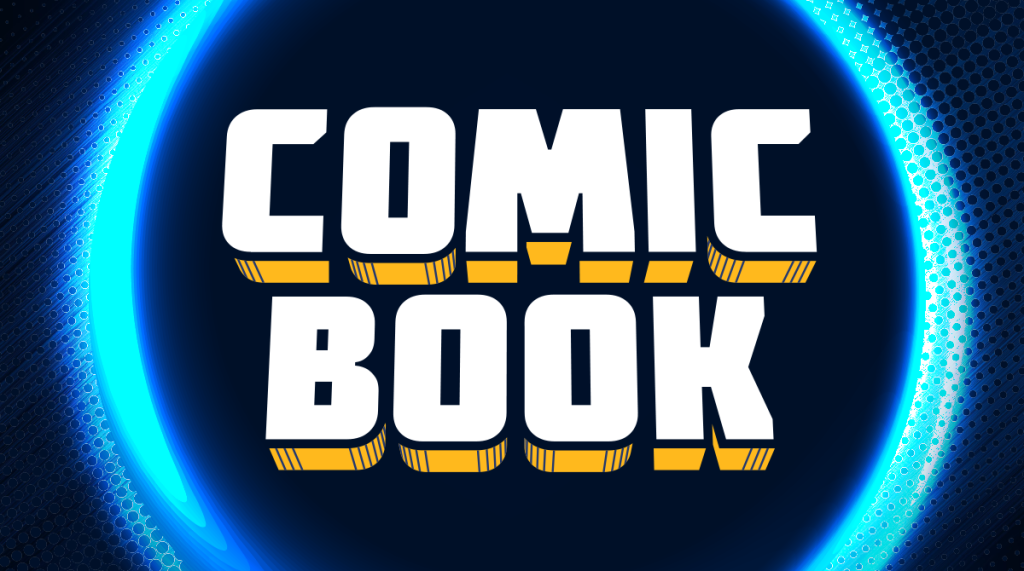
The season premiere of The Flash might have been slightly less Easter eggy than most, but certainly that doesn’t mean there weren’t any.
Videos by ComicBook.com
ATOM-SMASHER

In the comics, Atom-Smasher is a hero. Al Rothstein, grandson to the villain Cyclotron, is godson to Al Pratt, the Golden Age hero known as The Atom before Ray Palmer took on the name. Prior to becoming Atom-Smasher, Rothstein operated as Nuklon.
During The Flash executive producer Geoff Johns’ time on JSA, Rothstein briefly took on a vengeful and unhinged personality following the murder of his mother, eventually traveling back in time to save her. That storyline seems like it has a lot of potential given the over-arching story of The Flash last year.
That Rothstein was one of a number of DC characters named as having died during the particle accelerator explosion — a list that also included Ronnie Raymond, who later returned as Firestorm — also throws into question whether we might see some of those characters re-emerge as their superheroic selves soon.
NEWS 52
The New 52 program, a staple of DC’s TV universe as well as the comics, is back in action today.
SEPARATED FIRESTORM

Separating Firestorm is often one of the ways they change up the character’s status quo.
Since it takes two “halves” to make the hero, one of the easiest things to do when a writer wants to shift a stagnant period on the book is to change who the other half is. Sometimes the departing portion of the Firestorm matrix dies, other times he’s just “cured.” It’s rarely permanent.
MAYOR BELLOWS
Tony Bellows, a Central City cop in the 1990 version of The Flash, is the mayor in this iteration. It was he (played by the same actor all these years later) who gave The Flash the key to the city.
MERCURY LABS
Another nod to the 1990 version of The Flash, Mercury Labs is where the original love interest for the character worked. That actress, Amanda Pays, reprised the character in Season One.
WEATHERSBY & STONE
The law firm representing Dr. Harrison Wells in his legal matters? Weathersby & Stone.
That would be Taylor Weathersby and Eli Stone, the couple at the heart of the TV series Eli Stone. Or perhaps her father, played by Martin Stein — err, Victor Garber.
ZOOM

The first official name-drop of the season-long big bad.
We know very little about Zoom, as yet, and while the comics might give us an idea of what to expect…it’s a bit tricky.
In the original source material, Professor Zoom, Zoom and the Reverse-Flash have been used somewhat interchangeably over the years, which muddied the waters last year when fans were trying to figure out who Harrison Wells really was — and will likely do so again this year as we make our way through the inevitable mystery of Zoom.
During Geoff Johns’ run on The Flash he tried to build a buffer between the two identities so that he could have two similar characters exist in the mythology without being totally indistinguishable — and in the New 52, things have gotten a bit more distinct, even. So let’s take a look at the names in play and see what sense we can make of it all.
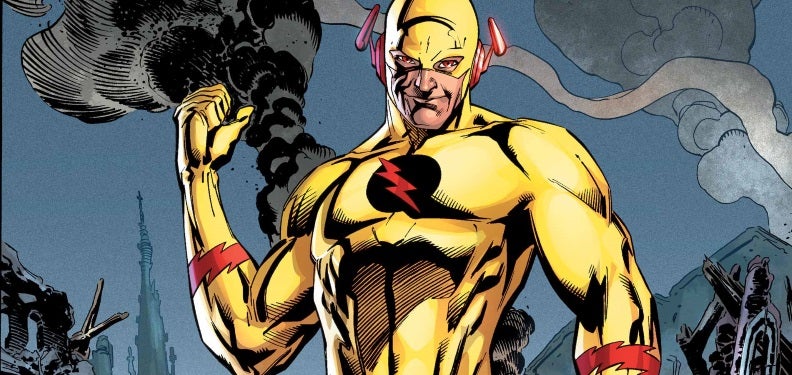
Thawne had a mean-on specifically for Barry and the two tangled dozens of times over the years, with some of the more notable examples being things like Thawne murdering Barry’s wife (Iris) and Barry killing him in retaliation and then standing trial for Thawne’s death.
In the Geoff Johns-penned Flash Rebirth, Thawne learned that Barry Allen had died, sacrificing himself to save the universe during the Crisis on Infinite Earths. Enraged that his enemy had died with dignity, Thawne sent a subliminal message to Barry, who had briefly emerged from the Speed Force, engineering Barry’s return from the dead during Final Crisis.
Thawne then broke into the Central City crime lab, murdered two police scientists, and recreated the accident which originally had granted Barry his speed, creating the Negative Speed Force. he then traveled through time on a personal vendetta against Barry Allen: He pushed a young Barry down the stairs, burned down his childhood home, left the door open so his dog was hit by a car, murdered his mother and attempted to stop his son’s marriage in the 30th Century (thanks to the DC Wiki for that cheerful refresher).
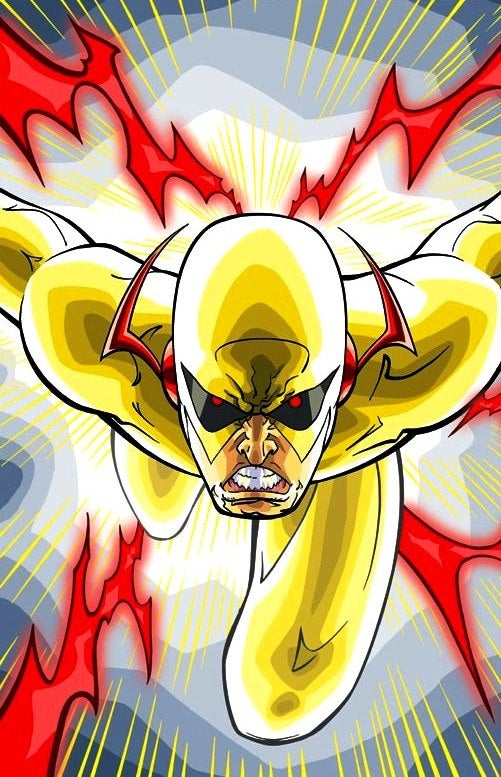
The second Reverse Flash, Hunter Zolomon, was somebody who fancied himself a friend and aide to The Flash. Like the Reverse Flash on television, he incorporated some black into the outfit, he worked to make Barry “better” and he had the crazy red eyes. This is the version who became generally known as “Zoom.”
“My name is Hunter Zolomon. Despite what the public believes, I am the fastest man alive. I am Zoom. But I am not a Rogue. Far from it. I have taken the name and colors from Eobard Thawne — the time traveler know as Professor Zoom — in order to terrorize my friend. Wally West. The Flash. I suffered through tragedy. I lost my family to it. I understand the depths it will drag one down to. And only by surviving it does one become stronger. I will recreate myself to help my friend and in turn — the world. I will do anything to make the Flash a better hero.”
He wasn’t technically faster than The Flash, although it often seemed like it; his powers worked a little differently and involved manipulation of time, allowing him to basically move between seconds, appearing fast but in fact moving at normal speed, just in a way that made him nearly impossible to hit.
His backstory: He was severely injured following an attack by Gorilla Grodd and left paralyzed. He wanted then-Flash Wally West to travel back in time to stop the injury from happening, but Wally refused, not wanting to mess with the timestream. When Zolomon tried to use the treadmill himself to do it, the resulting explosion is what gave him his powers. He determined that in order to be a better hero and understand personal loss, Wally had to experience some of his own, and targeted The Flash’s loved ones, even causing a miscarriage in his wife.
Ultimately, he fancied himself a perfect foil for The Flash because he wanted to make him a better hero. Everything he did, then, he rationalized that it was only to challenge The Flash and force the speedster to evolve past it.
The fact that he’s primarily a Wally hero (once Barry returned from the dead, Zolomon became less of a figure in the series, with Thawne returning to prominence) seems worth mentioning, since we know that Wally West will appear in some capacity this season on The Flash.
To add to the layers of confusion around the characters’ naming, though, there are a few things to consider.
First, Tom Cavanagh, who played Harrison Wells/Eobard Thawne in the first season of The Flash, will remain on as a series regular in Season Two.
Second, following the events of the Flashpoint reboot in 2011, almost none of the history above remains canonical (although The Flash has generally used mostly pre-Flashpoint origins for characters, so it is pertinent). In the post-Flashpoint DC Universe, we haven’t seen Zolomon at all yet and the Reverse-Flash was in fact a relative of Iris’ named Daniel West. In that world, Eobard Thawne finally made his first appearance just a couple of months ago as part of the line-wide DC You publishing initiative…and he’s going by “Professor Zoom” again.
That’s not to say that these two are the only contenders, of course…but since fans had asked, we wanted to (as much as we could) clarify the distinction between the two names, and explain why they’re used so interchangeably.
Our guess — and seemingly the most likely based on that image at top — is actually someone else entirely.
While Thawne is generally discussed as the first Reverse-Flash, that’s because Earth-1’s continuity has always taken priority since the Crisis on Infinite Earths. There was, in fact, a Golden Age Reverse-Flash in the pages of Jay Garrick’s Flash comics as well. A blue-masked, self-obsessed doppelganger of Garrick, Edward Clariss is generally called The Rival, and he actually might be our best candidate for a TV villain.
Why?
Well, there’s all that blue lightning in the trailers for The Flash from Comic-Con, for a start.

Many fans have wondered what significance the blue lightning might have, and it’s something that’s appeared in The Flash comics periodically over the years. More often than not, fans have associated it with Cobalt Blue, Barry’s literal evil twin brother, who appeared during Mark Waid’s run on The Flash and who was actually an ancestor of Eobard Thawne. A lot of people — occasionally myself included — thought Eddie Thawne might turn out to be Malcolm Thawne, better known as Cobalt Blue, in the TV show.
There have been other times, too; in The Flash (1990), John Wesley Shipp actually played a twisted clone of The Flash called Pollux, who wore blue and had a blue speed trail behind him. Barry in recent years has gone for blue lightning twice: once during the Blackest Night and Brightest Day events when he could be seen wearing a Blue Lantern ring and uniform, and once during the Futures End event and its fallout, as an “evil” Barry from five years into the future was introduced with a blue costume and powers. That version of Barry was instrumental in the introduction of Wally West to the post-Flashpoint DC Universe, so when Wally was announced for Season Two of The Flash, it was easy to draw that connection.
But probably the most obvious answer remains Clariss.
Clariss was a professor at the university attended by the Earth-2 Flash, Jay Garrick. He believed he had recreated the formula that gave Garrick his speed, but the scientific community didn’t believe him, driving him to madness and crime.
In the comics, the formula Clariss wanted credit for was a drug called Velocity 9, later retconned to have been invented by Vandal Savage — who, coincidentally enough, will serve as the primary antagonist on DC’s Legends of Tomorrow in its first season. It isn’t, as far as I can tell, tied to the mathematical formula spoken by Johnny and Jesse Quick in order to gain them access to the Speed Force, although with Jesse joining The Flash this year, it may not be entirely unrelated on TV.
Clariss took to the streets in a darker version of Garrick’s costume, and instead of trailing yellow lightning behind him when he ran, his blue, possibly becuase of the darker pants and blue face mask he wore. Clariss’s formula proved to be temporary, and he was defeated when it was expended. He reappeared a few months later, and in battling the Flash, reached light speed and vanished.
Clariss, it seems, had inadvertently trapped himself in the Speed Force, where he remained for decades before being retrieved by Johnny Sorrow, who invited him to join the new Injustice Society — in a storyline written by The Flash executive producer and DC Entertainment Chief Creative Officer Geoff Johns, the driving force behind Zolomon. He would appear in another, Garrick-centric storyline in The Flash during the Johns era.
After returning from the Speed Force, The Rival was reinvented to have his face blurred by speed motion rather than simply wearing a mask — something that many of Johns’ speed-powered villains would echo. This could explain why Tony Todd will be only the voice of Zoom, rather than having one actor do both.
After his escape from the Speed Force, Clariss was able to possess other bodies, being that he was now a being of pure energy, which may also explain the need for a dynamic voice actor to do at least part of the work.
On top of all of this, of course, there’s the Comic-Con teaser:
In that video, Jay Garrick comes to tell Barry, “your world is in danger,” which seems that he has some expertise in whatever is going on. That he’s apparently going to be a mentor-type figure to Barry backs that up, of course, but what if it’s even more simple than that: what if it’s primarily his Rogues and his big bad who are terrorizing Central City?
But who is going to be Zoom on TV? Leave your thoughts in the comments.
JAY GARRICK

Garrick was the original Flash in the comics. Created in 1940, Jay Garrick was the fastest man alive, until his comic was cancelled. When the character was reinvented during the Silver Age under famed editor Julius Schwartz, the concept was updated, including changing Garrick to Barry Allen.
A few years later, in The Flash#123, Garrick would team-up with Barry Allen, representing the introduction of DC’s multiverse. It was revealed that almost every DC hero had an Earth-2 counterpart, usually Golden Age heroes with different civilian names and costumes, but similar codenames to characters who had been reinvented but occasionally — as with Superman and Batman — simply alternate-Earth versions of the same people.

